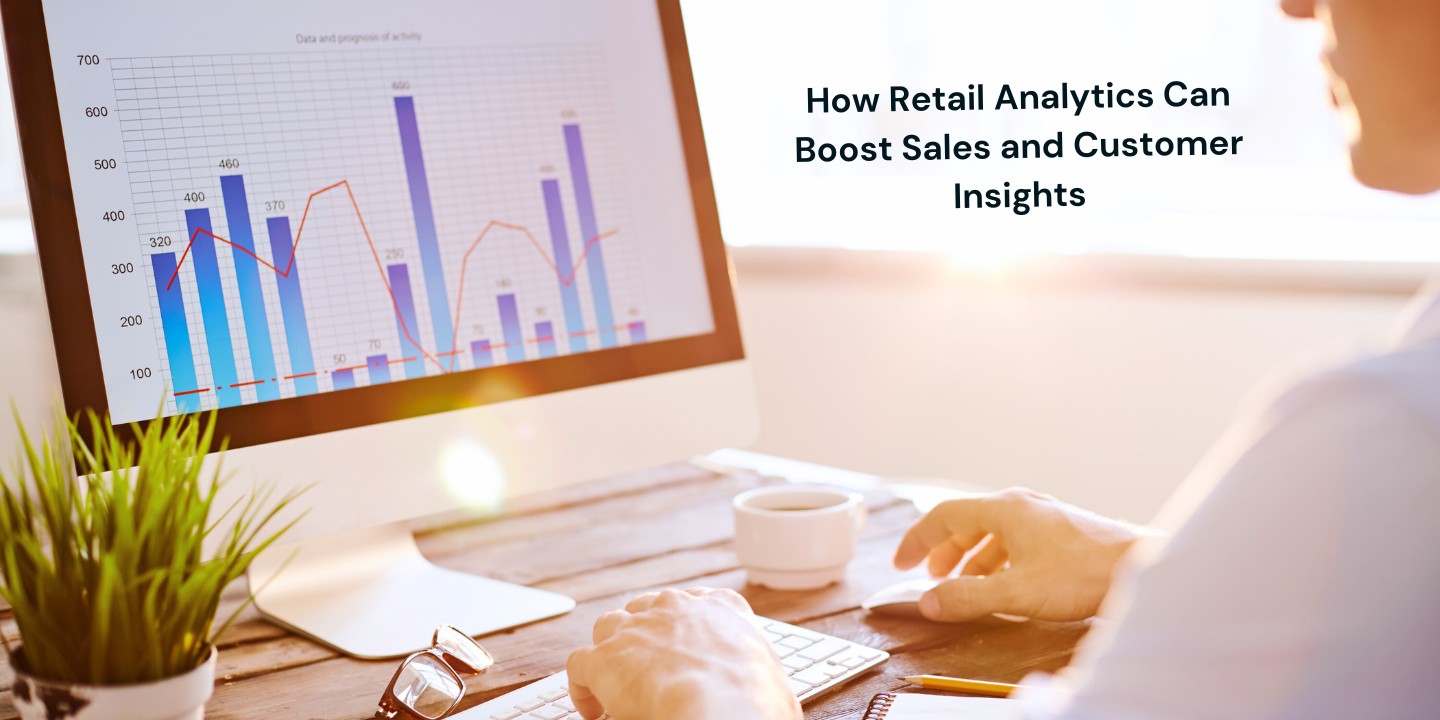How Retail Analytics Can Boost Sales and Customer Insights | Glew

In the fast-paced retail industry, where staying ahead of competitors is crucial, the benefits of data analytics are undeniable. It's not just about enhancing the customer experience and increasing loyalty but also about understanding customers better, streamlining operations, and driving sales growth. In this article, we'll delve into how retail analytics can empower businesses to make smarter, data-driven decisions and the actionable strategies needed to unlock their full potential.
Why Retail Data Analytics is Crucial for Sales Growth
Retail data analytics is no longer a luxury; it's a necessity for growth. It involves gathering and analyzing customer data, sales, inventory, and market information to make more informed decisions. These insights help businesses optimize their operations, improve the customer experience, and ultimately drive growth. According to a report by McKinsey, companies that make data-driven decisions are 23 times more likely to acquire customers and six times as likely to retain them compared to their competitors.
Case Study: Sunflower Digital
Sunflower Digital, a growing multi-brand commerce company, leveraged Glew's Commerce Data Cloud to consolidate its e-commerce, in-store, and marketing data. By using Glew's platform, Sunflower Digital generated insights into its top-performing products and adjusted its inventory strategy, leading to a 12% improvement in inventory turnover and increased online sales by 15%.
Retailers today use advanced analytics to understand the specific behaviors and preferences of different customer segments. This ability to segment customers and target them with personalized offers is a crucial driver of modern retail success. With tools like Glew's Commerce Data Cloud, businesses can consolidate and analyze customer data from multiple touchpoints, including e-commerce, social media, and in-store transactions. These tools ensure that decision-makers have access to accurate, real-time data for making strategic choices that boost sales.
How to Drive Sales with Data-Driven Decision Making
One of the most tangible benefits of retail analytics is its ability to drive sales by providing a deeper understanding of customer data and buying behavior. For instance, organizations can use predictive analytics to forecast demand based on historical sales data, allowing retailers to plan their inventory better and adjust pricing strategies. Businesses using AI-driven demand forecasting have seen reductions in stockouts by 30% and a 20% decrease in excess inventory, resulting in significant cost savings and enhanced customer satisfaction (AI Automation)(Keymakr).
Customer Segmentation and Personalized Marketing Strategies with Retail Analytics
Customer segmentation is one of the most powerful applications of data analytics. By dividing customers into groups based on characteristics such as purchasing history, geographic location, and demographics, retailers can tailor their marketing messages and promotions to specific audiences. For instance, customers who frequently purchase high-end products can receive special offers on premium items, while discount shoppers can be targeted with promotions on budget-friendly products.
Case Study: Blume
Blume, a fast-growing direct-to-consumer (DTC) brand, used Glew's platform to unify their customer data across Shopify and email marketing tools. By analyzing customer segmentation and lifetime value (LTV) through Glew, Blume tailored marketing campaigns to focus on high-LTV customers, increasing repeat purchases by 22% in six months.
This approach not only enhanced the customer experience but also increased overall customer loyalty. The use of data-driven decisions enables retailers to send relevant messages that resonate with individual customers, leading to higher conversion rates and stronger brand loyalty.
Increase Operational Efficiency with Retail Analytics
In addition to driving sales, retail analytics plays a critical role in improving operational efficiency. Retailers often struggle with inefficient inventory management, overstaffing, and misaligned marketing efforts. Data analytics provides the insights necessary to optimize these areas and reduce operational costs.
Leveraging Real-Time Data Analytics
One of the key advantages of real-time data analytics is the ability to monitor sales and inventory data as it happens. Platforms like Glew offer dynamic dashboards that provide a real-time view of key metrics such as sales velocity, stock levels, and profitability, empowering retail executives to make quick adjustments in response to emerging trends or unexpected demand spikes. For instance, a sudden surge in online orders can prompt timely inventory replenishment, preventing stockouts and ensuring that customers receive their products promptly.
Case Study: The Little Market
The Little Market, a non-profit retail brand, used Glew’s real-time analytics to monitor product performance across its e-commerce platform. With real-time insights, The Little Market optimized product promotions and stock levels, reducing stockouts and improving overall sales performance.
How to Collect and Manage Customer Insights Using Data Analytics
A comprehensive understanding of customer data is essential for any retailer aiming to succeed in today's competitive landscape. Retailers must focus on collecting data from all available touchpoints, including e-commerce platforms, POS systems, and social media. This data-driven approach enables businesses to gain insights into the entire customer journey, from initial interaction to post-purchase behavior.
Key Sources of Customer Data for Retail Analytics
- E-commerce Platforms: Platforms like Shopify and Magento track a wide range of customer data, from product views to cart abandonment. This data helps retailers understand how customers navigate their websites and where they encounter friction in the buying process
- Point-of-Sale (POS) Systems: In-store transactions provide valuable insights into what customers are purchasing, how often, and how much they spend per visit. POS systems also capture data on payment methods and promotions used.
- Social Media and Email Marketing: These channels provide crucial data on customer engagement and preferences. Tracking open rates, click-through rates, and customer responses to different types of content helps refine marketing strategies.
How to Optimize Data Cleansing and Integration
While collecting large amounts of customer data is crucial, it's just the beginning. To derive meaningful insights, this data must undergo proper cleansing, validation, and integration. The cleansing process eliminates errors, duplicates, and inconsistencies, while integration combines data from various sources into a single, unified view. Glew's platform automates these processes, providing retailers with clean, actionable data to support their data-driven decisions.
Case Study: Hemline
Hemline, a fashion retailer with 30 stores, used Glew to overcome the challenge of consolidating data from multiple locations. Previously reliant on manual spreadsheets, Hemline struggled with inconsistencies and time-consuming processes. By adopting Glew's data integration and reporting platform, Hemline streamlined its data consolidation across all stores, improving the accuracy of performance reports. This change enabled faster, data-driven decisions that optimized inventory management and overall operations.
Ensuring Data Privacy and Compliance
As retailers collect vast amounts of customer data, ensuring compliance with data protection regulations such as GDPR and CCPA is crucial. Data privacy is not just a legal obligation but also a key factor in building and maintaining customer loyalty. Retailers need to implement strong data governance practices to ensure that they comply with these regulations while safeguarding customer information.
Real-Time Analytics to Improve Sales Growth
Incorporating real-time analytics into your retail operations allows you to monitor customer behavior and market trends as they happen. By doing so, businesses can adjust their strategies on the fly, ensuring that they remain competitive even in a rapidly changing market.
Tools for Real-Time Data Analysis
Glew's Commerce Data Cloud offers real-time reporting features that allow retailers to track critical metrics such as sales, profitability, and customer satisfaction. These real-time insights are essential for making agile decisions that can directly impact sales growth. For example, if a particular product is trending on social media, retailers can respond by increasing marketing efforts or adjusting pricing to capitalize on the demand.
Using Real-Time Analytics for Sales Growth Strategies
In today's omnichannel world, the in-store shopping experience is just as important as online interactions. By using data analytics, retailers can better understand what drives customer satisfaction in their physical locations and tailor their offerings accordingly.
Case Study: G&T Online Alcohol Retailer
G&T, a leading online alcohol retailer, utilized Glew’s real-time analytics to gain insights into product performance and customer purchasing trends. By tracking real-time sales data across various brands and product categories, G&T optimized inventory levels and adjusted product placements to match customer demand. The company's data-driven approach resulted in increased sales and improved customer satisfaction, as high-demand products were consistently available when customers wanted to make a purchase.
Strengthening Customer Loyalty with Data-Driven Insights
Customer loyalty is essential for long-term success, and data analytics helps retailers build and maintain it by providing insights into what customers value most. Retailers can track purchasing patterns and engagement levels, offering personalized rewards that keep customers coming back.
Case Study: Oatly
Oatly, a plant-based food brand, used Glew’s predictive analytics tools to forecast demand for its popular products during peak seasons. The insights gained from these analytics allowed Oatly to manage inventory and prevent shortages efficiently, resulting in a 20% increase in sales during high-demand periods. This data-driven approach to inventory management ensured that Oatly could meet customer demand even during the busiest times of the year.
Overcoming Challenges in Retail Analytics
Despite the many benefits of retail analytics, implementing an effective strategy can be challenging. Retailers often encounter obstacles such as data silos, which prevent them from gaining a comprehensive view of their operations. Here are some common challenges and solutions:
Data Silos
One of the most significant challenges in retail is the existence of data silos. When different departments (e.g., marketing, sales, operations) store data separately, it becomes challenging to create a unified view of the business. This results in missed opportunities and inefficiencies. To overcome this, businesses must integrate their data sources into a single platform.
Solution: Glew's Commerce Data Cloud offers a single source of truth by consolidating data from multiple sources, ensuring that all departments have access to consistent, accurate data.
Data Accuracy
Poor data quality is another challenge. Inaccurate or incomplete data can lead to flawed insights, which in turn result in misguided business decisions. Ensuring the accuracy and cleanliness of data is paramount for effective retail analytics.
Solution: Glew's automated data validation and cleansing processes ensure that retailers are always working with accurate, up-to-date information.
Privacy and Compliance
As retailers collect and store increasing amounts of customer data, ensuring compliance with data privacy regulations such as GDPR and CCPA is critical. Failing to protect customer data can result in significant legal and reputational consequences.
Solution: By implementing robust data governance frameworks and adhering to compliance standards, retailers can protect sensitive data while maintaining the trust of their customers.
Building a Data-Driven Culture for Retail Success
To fully leverage the power of retail analytics, businesses must foster a data-driven culture, encouraging all departments—whether marketing, operations, or finance—to base their decisions on insights derived from data rather than intuition. Businesses that prioritize data-driven decisions are better positioned to identify opportunities, reduce inefficiencies, and stay ahead of competitors.
Example: A multi-brand retailer implemented a company-wide initiative to promote data-driven decision-making across all teams. By using Glew's Commerce Data Cloud to provide real-time insights and personalized dashboards for each department, they improved cross-functional collaboration and made more informed strategic decisions, resulting in a 10% increase in profitability within one year.
How Retail Analytics Can Drive Sustainable Growth
Retail analytics is a transformative tool that empowers retailers to optimize their operations, improve the customer experience, and drive sales growth. By leveraging data analytics to gain insights into customer behavior, inventory management, and market trends, retailers can make informed, data-driven decisions that lead to sustainable growth.
In an era where customer expectations are higher than ever, businesses that invest in advanced analytics and predictive analytics will be better equipped to anticipate trends, personalize experiences, and remain competitive. Whether you're a multi-brand retailer looking to unify your data across channels or a smaller business seeking to enhance your customer loyalty, the key to success lies in your ability to harness the power of data.
Learn more about Leveraging Retail Analytics for Sales Growth by exploring our resources on multi-brand companies thriving with unified commerce data and best practices in e-commerce analytics:



